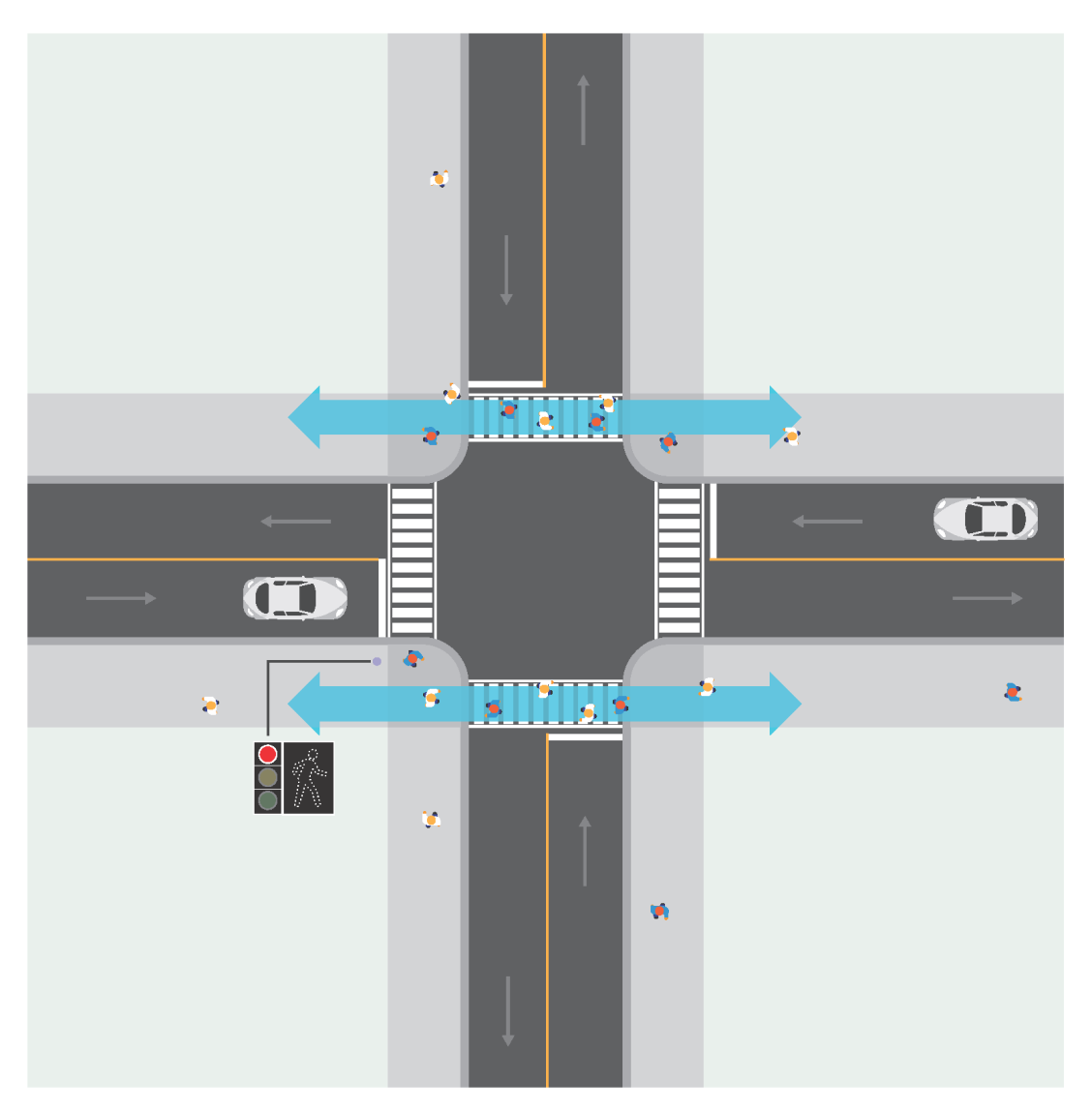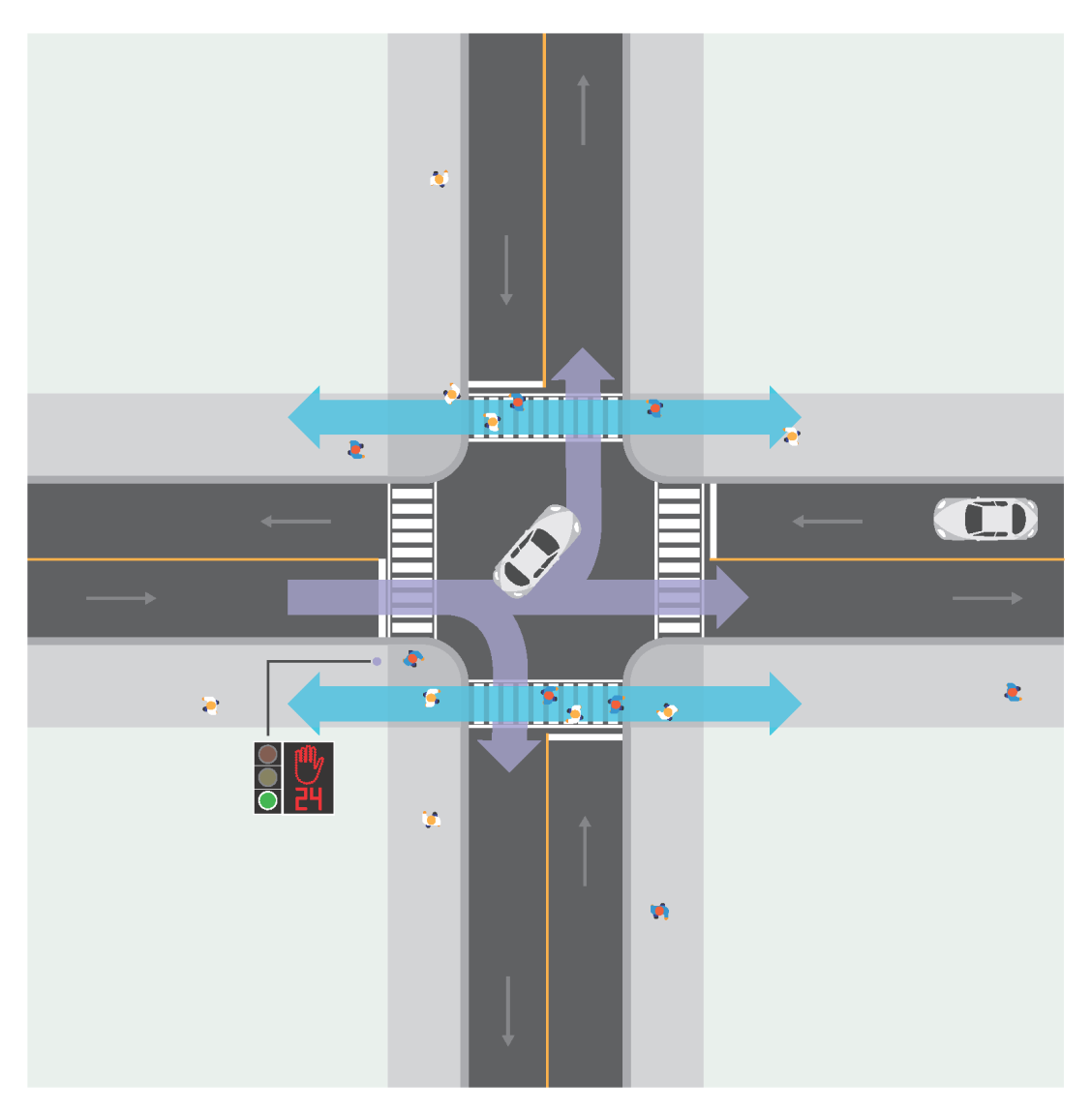Background
A small change is making a big improvement to pedestrian safety Downtown.
We are implementing Leading Pedestrian Intervals (LPIs) at more than 100 Downtown intersections. This signal timing change provides pedestrians five seconds to start crossing the street before the light turns green for vehicles.
This allow pedestrians to be more visible in the intersection, which reduces the risk of a vehicle-pedestrian collision. They are a cost-effective and proven way to make intersections safer for both pedestrians and drivers.
How Leading Pedestrian Intervals (LPIs) work
LPIs only change signal timing at an intersection. The signals for vehicles and pedestrians will look the same as they always have. Here is how the signal timing works:
Phase 1: Pedestrians only
Pedestrians get five seconds to begin crossing the street.

Phase 2: Pedestrians and vehicles
Vehicles get a green light. Vehicles that are turning yield to pedestrians who are crossing the street. Pedestrians should always look both ways before crossing.

Tips for LPIs
It will take some time for everyone to get used to LPIs. Here are some simple tips for walking and driving at intersections with an LPI:
- Be careful turning right on red: If you’re driving and want to turn right on red, always stop and check for pedestrians. They may have the right-of-way with a ‘walk’ signal, while drivers still have a red light. Be extra careful, look both ways, and let pedestrians cross first.
- Look both ways: Whether you’re walking, biking, or driving, make sure to look both ways before crossing the street.
Updates
Leading Pedestrian Intervals will begin appearing at Downtown intersections on Monday, March 10.
